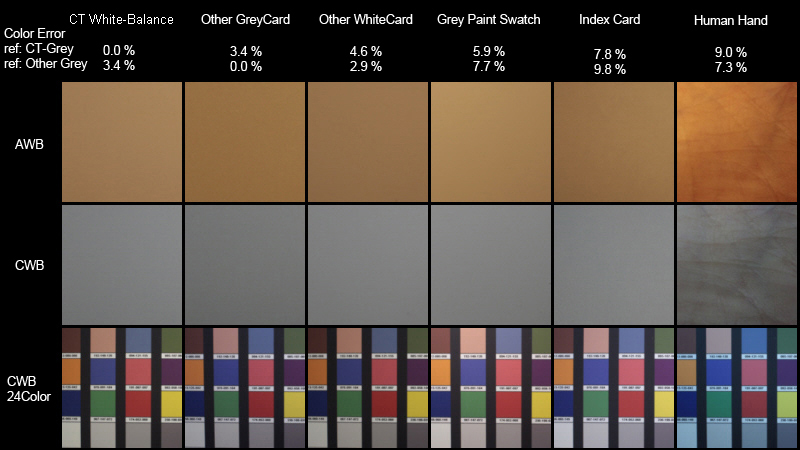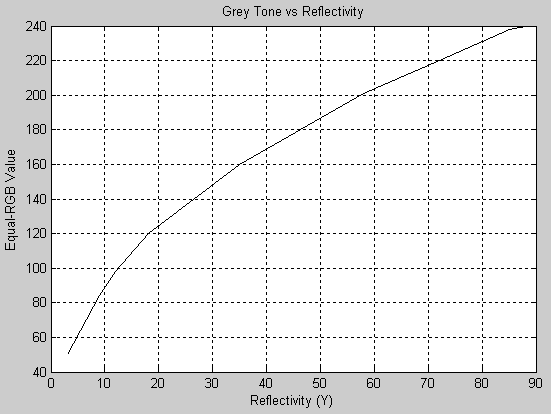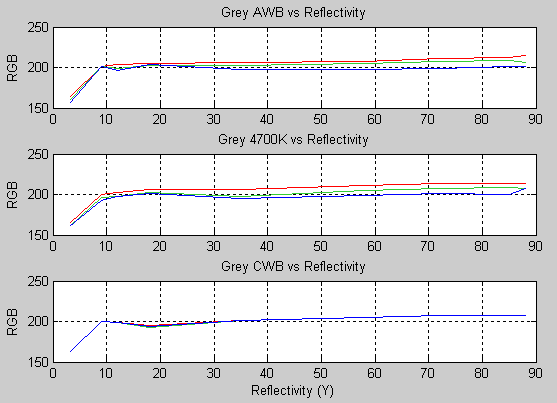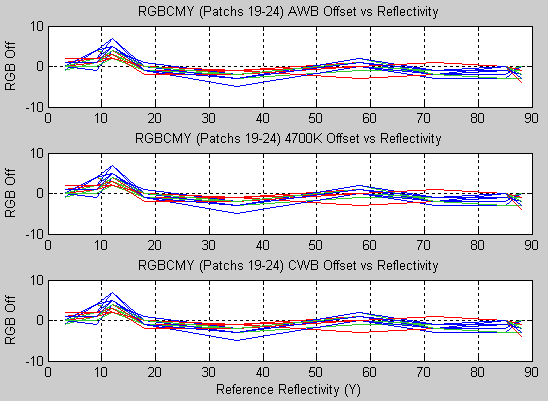|
|
|
|
|
|
24ColorCard FAQWhite-Balance Reflectivity: 12%, 18% or ??% A range of neutral grey values could potentially be used for camera white balance. However, to get the best color from a digital camera, you need either ideal lighting or accurate compensation using a Custom White Balance. The chart below shows why an engineered White-Balance Card, such as the CTrax Neutral GreyBalanceCard is a better solution (Read why below) for performing a camera White Balance than just using a plain white card, an index card, a 'white' paint swatch, your hand or even using the camera's AWB. 
Notes:
Reflectivity vs White-Balance: The "18% reflectivity standard" appears to come from Kodak, light meters and film -- it was exclusively for setting "mid-grey" exposure for half-way between what the eye sees as black vs white and printing. The "12% reflectivity" (which is darker) is an ANSI standard for camera exposure / light meters and apparently is still related to metering with digital cameras even though digital sensor response is totally different from film. It was only after these "standards" for exposure were widely marketed that they were advertised as also usable for white-balance -- in competition with 'white' cards and white paper. Unfortunately, not all exposure cards are neutral and white surfaces are often not neutral color because of UV dyes (blue cast) or use of titanium oxide (yellow cast), so lowering the reflectivity of a "white" base media using some added RGB/grey to then achieve a slightly darker but neutral tone is an easier solution. The question becomes What Grey is best? So I created a range of 9 neutral grey cards to photograph (each print was individually adjusted and measure R=G=B within a small margin). Then I photographed each, plus a CameraTrax 23ColorCard (where I'd measured those RGB values), using my Canon 5D-II and AWB, 4700K temp and CWB (based on the photo of each grey card). I used a broadband Solux 4700K halogen lamp as the illumination source. First, here is a plot of the Equal-RGB Grey value vs the calculated reflectivity which looks roughly as expected: 
This next plot shows RGB values from the photo of the grey card where the photo included using AWB, fixed 4700K color temp setting or a CWB. 
There are several things to notice in the plot above:

In the above plot, notice that all are much more similar; which is likely just the difficulty in getting completely accurate color exclusively from just a white-balance step (colors are obviously more difficult than neutral grey). Note that the RGB values are generally <+/- 5 because the plot is only of color variance -- the average color value has been removed as an 'offset' so as to only see the +/- variation related to reflectivity. Again notice that <20% reflectivity will likely include more white-balance error and that, again, >70% reflectivity is more uniform. I would also note that higher reflectivity "grey card tone" for white-balance provides more light to the camera (than an 18% exposure card) which appears to be the better choice (possibly due to lower noise). The CameraTrax GreyBalanceCard surface has about 72% reflectivity which, given the above plots, suggests is a good choice because:
Overview:
|